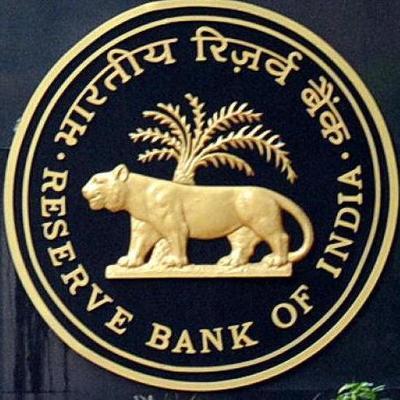 Finance Minister, Nirmala Sitharaman in her maiden innings has delivered a prudent budget. The budget was presented in the background of a slowing economy, and there was a lot of expectation that the budget would give focus on a stimulus package to recoup the economy. However, contrary to the expectation, the Finance Minister gave thrust to fiscal consolidation and has lowered the fiscal deficit target of FY20 to 3.3 percent from 3.4 percent announced in the interim budget. While the fiscal consolidation path chosen by the Finance Minister should be well appreciated, what caught everyone’s attention was Finance Minister’s announcement to raise money from abroad. There was a mixed response on whether the Government should proceed with raising a part of its total borrowing in foreign currency.
Finance Minister, Nirmala Sitharaman in her maiden innings has delivered a prudent budget. The budget was presented in the background of a slowing economy, and there was a lot of expectation that the budget would give focus on a stimulus package to recoup the economy. However, contrary to the expectation, the Finance Minister gave thrust to fiscal consolidation and has lowered the fiscal deficit target of FY20 to 3.3 percent from 3.4 percent announced in the interim budget. While the fiscal consolidation path chosen by the Finance Minister should be well appreciated, what caught everyone’s attention was Finance Minister’s announcement to raise money from abroad. There was a mixed response on whether the Government should proceed with raising a part of its total borrowing in foreign currency.
The argument put forward by the Finance Minister was that the country’s sovereign external debt to GDP is among the lowest globally at less than 5%. It gives enough space for the government to raise money from abroad. There are pros and cons to this argument. On the brighter side, the government will be able to raise money at a lower interest rate in the foreign market than in the domestic market. The global interest rate is at historic low levels, and it would help the government in raising credit at a cheaper rate. On the other hand, the interest rate in India is still one of the highest when compared to other economies. In such a scenario, raising money at a lower interest rate would help in reducing the interest repayment burden on the exchequer.
Similarly, one of the most worrying factors of increasing government borrowing from the domestic market is concerning the crowding out of private investors. It needs to be noted that the borrowing from the market is not only done by the central government but also by the state governments. For instance, in 2017-18, the gross market borrowing by the central and the state government stood at Rs 11667.85 billion. Likewise, in the same year, the combined fiscal deficit of the central and state government stands at Rs 11004.25 billion. In addition to the central and state government, various Public Sector Units (PSUs) also borrow from the market. Now, the debate is also going high on the off-budget borrowing by the central government which when added would inflate the fiscal deficit figures. In such a scenario, with the central government switching to the foreign market for raising part of its borrowing, it is assumed that there will be less crowding out of private investors.
However, on the other side, there is some inherent risk with the government borrowing in foreign currency. For instance, the currency market is highly fluctuating. The repercussions of various developments in the global economy are directly felt in the currency market. The best example in this regard is the ‘taper tantrum’ of 2013. The taper tantrum of 2013 resulted in a series of turbulence in the emerging economies. India was also not immune from it, and we were one among the fragile five economies, apart from Brazil, South Africa, Turkey, and Indonesia. The country also witnessed the collapse of rupee against the dollar in 2013. In such a scenario, in a highly fluctuating currency market, it won’t be a wise decision to borrow money in foreign currency.
The developments in the global economy are also not favourable for the rupee. The currency market is also feeling the heat of the wave of protectionism, and protectionist measures adopted by various economies. For instance, the Indian rupee depreciated against the dollar in the background of rising trade tensions between the US and China. Additionally, uncertainties on the interest rate hike by the Federal Reserve continues. The interest rate hike by the Fed can have serious implications on the currency market, which was witnessed in 2013. It shows that the currency market is closely linked to the developments in the global economy. Considering the present developments in the global economy, there is a high probability for the Indian rupee to depreciate against the dollar.
In such a scenario, if the central government float dollar denominated bonds in the foreign market, the burden caused by the depreciation of the rupee has to be borne by the borrower i.e. the government. The government won’t be able to reap the benefit out of the low interest rate if rupee depreciation is in the pipeline. The government would be forced to shell out more rupees to buy dollars for the repayment of interest as well as principal. It could turn out to be an added pressure on the exchequer. Similarly, if the government is not limiting its borrowing from the domestic market, the issue of crowding out of private investors cannot be solved. Ultimately, it would only turn out to be a huge burden on the exchequer with mounting debt and interest payments, without any positive benefit.
However, it needs to be stressed that raising money from the foreign market is not completely a bad idea. India is a developing economy, which requires investment in infrastructural development. However, the government should not go on a spree in borrowing from the foreign market. It should consider its fiscal space and repaying capacity before taking a risky step of borrowing in foreign currency. There should be a limit on the amount it could raise from the foreign market. Such an arrangement would help the government to minimise the risk from rupee deprecation that arises from the turn out of unpredictable events.









